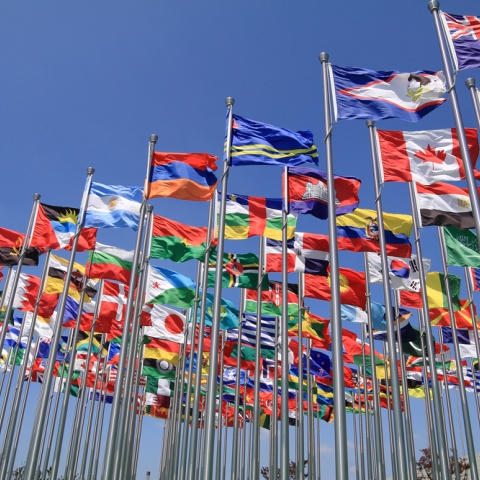Planning an International Meeting Requires Local Support

Creating experiences that appeal to multicultural audiences and meeting the logistical challenges of planning in a foreign country are becoming more routine than ever for corporate meeting planners. In recent years, corporations are investing more in events of all sizes in locations around the globe.
In the 2018 Global Meeting and Events Forecast, Issa Jouaneh, senior vice president and general manager at American Express Meetings & Events wrote, “Looking ahead to 2018, the meetings and events industry is thriving. We are seeing steady and increasing investment as meetings are viewed more and more as growth enablers within organizations.”
He continued, “From a global perspective, we are seeing a trend toward localization, with customers operating global programs that have an increasing recognition of the reality that business happens locally. There seems to be a greater desire to add flexibility to global programs, recognizing country-specific needs and the dynamics necessary to drive program adoption.”
To address this trend, meeting planners working to organize events around the world must pay close attention to attendee experiences such as food and beverage selections and room set up; budget, including tax implications; labor policies; and more.
Leigh Long, head of marketing at The XD Agency, thinks our cultures have a large influence on our preferences.
“A cultural group’s collective views on the respective roles of family, age, government and gender no doubt have impact the way we develop creative marketing concepts,” she said.
Richard Toscana, vice president, special events at FreemanXP, says planners need to be adept at understanding the cultural expectations in the countries they are planning in.
“For example, in Asian culture, business acumen and cultural norms impact how you set a room,” he explained. “They don’t like to be set in squares or have their backs to anything; rather they like communal and round designs that are also hierarchal according to their level in organization and that differs from, say Europe.”
Toscana urges planners to hire local culturists and leverage their knowledge to help them understand the nuances that will affect their decisions.
Kathy Doyle, Cisco’s director of global customer confererences, Cisco Live and Cisco Connect, says at the corporate level it focuses on providing high level event strategy, branding, technology, website, and experience best practices globally and then rely on local teams to focus on the specific event design, attendee experience and execution.
“This model addresses the localization and cultural needs for each event in various regions,” she added.
The cultural differences affect learning as well. Long points out that some cultures’ orientations leave people poised for active experimentation and tactical learning, whereas others have much greater comfort in an environment that is more passive and reflective.
“When experience designers understand these differences — and go to whatever lengths necessary to plan for them — it’s to the benefit of the audience and presenter alike,” she said.
Budgeting is another area that is heavily impacted by location. Everything from how the budget is created to when payments are made to the tax implications of those payments can vary.
“How you budget in Singapore is different than in San Francisco,” Toscana said. “Labor costs are reflected differently and it’s critical to understand financially what is expected in each culture and what’s normal to be billed for.”
Here again, enlisting outside help is essential. A tax consultant can help you understand the intricacies that come along with working in unfamiliar locations.
“In certain countries you can claim taxes back and procedures for payments to vendors are different internationally, so a strong financial and legal team is critical,” Toscana added.
The XD Agency’s executive producer, Lucy Simmons, added that other best practices for corporate event planners include being aware of your dress and language.
“First impressions count,” she said. “I learned quickly when moving to the Middle East that you only shake an Arab’s hand if they put theirs out first, male or female.
She continued, “It’s also best to wear respectful clothing; you don’t need to wear the local dress, but acknowledging their beliefs and traditions is important. And on a related note, check the basics: if it’s a cultural holiday or celebration, be aware and don’t arrive to a meeting during Ramadan with a Starbucks.”
Other best practices from Simmons include being ready to react to changes in society or politics and knowing that you might need to change your communications from market to market.
‘When you’re working on something more regional or global, sometimes the genesis of a concept can be lost due to a variety of factors, but certainly language among them—there are multiple regions with their own Arabic languages for one thing,” she explained. “Know that your communications will need to change from market to market at the outset and consider shaping the message in a way that will be more suited to a global audience.”
The bottom line when planning an international event: research matters. Use all tools at your disposal from consultants to social media to reading the local news to know who you’re targeting and why. Embracing the local culture and tapping the resources of the location where you’re planning an event will facilitate education and enhance business connections.
Don't miss any event-related news: sign up for our weekly e-Newsletter HERE & engage with us on Twitter, Facebook, LinkedIn & Instagram!


Add new comment